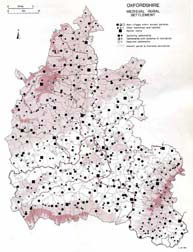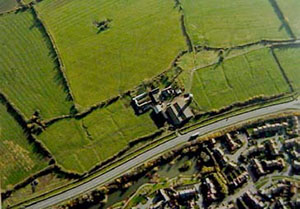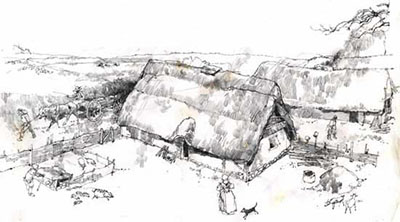Past Talks
Deserted Mediaeval Villages in Oxfordshire
Date: 21st June 2010
Speaker: James Bond
The Meeting was held at St Edburg’s Church Hall, Bicester. Fifty nine members and three guests were present at the meeting. Bob Hessian introduced James Bond who examined the distribution of deserted mediaeval villages in Oxfordshire and the reasons for their demise.



As early as the 16th Century the local historian White Kennett and other scholars were recording the existence of deserted villages in the Oxfordshire landscape. By 1966 over two and a half thousand sites had been identified nationally with heavy concentrations in Yorkshire and the South Midlands. The sites were often linked to ‘Open Field’ systems. In Oxfordshire there were 146 Deserted Mediaeval Villages and 130 shrunken sites.
The location of the villages could be determined through evidence gathered from Saxon Charters, Royal Survey and Tax Rolls which indicated that by 1428 many villages were struggling to exist. Subsequently maps recording former settlements, plans that indicate ‘lumps and bumps’ on the topography and aerial photography have provided additional information about the location of deserted settlements. On the ground the existence of isolated churches, as at Hampton Gay, patches of stinging nettles and monochrome photographs provide further clues. Some villages have simply relocated, such as at Oddington, where the evidence of house platforms lies close to the present dwellings that make up the present village. Many sites have been ploughed out as a result of modern agricultural methods. A number of good examples still exist, as at Woodcote, near Beckley.
The most comprehensive survey of a deserted mediaeval village in Oxfordshire has taken place at Yarnton. The village dates from Saxon times and was associated with an open field system. Dwellings clustered around the Church as the settlement developed. The modern village has grown up in new locations away from the Church.
Monastic Granges often ensured that mediaeval villages contracted and were replaced by the Grange. Some villages failed as a result of repeated poor harvests that forced residents to seek new homes. The Black Death had a significant impact on mediaeval villages. Some were abandoned, as at Tusmore Park. Other villages shrunk in size as the population declined. Villages such as Coombe, near Woodstock, recovered from the ravages of the plague but moved location in the process. Changes in agricultural priorities ensured that Wretchwick, near Bicester, declined as sheep production encouraged by the local Priory replaced arable activity. Less labour was required to look after sheep rather than was required for arable production.
In the 18th Century the great estates removed villages from the parks that they created. At Middleton Stoney the village was rebuilt outside of the enclosed park.
James answered questions at the completion of his talk. The evening concluded with a raffle and refreshments. The Meeting closed at 9:38 pm.
